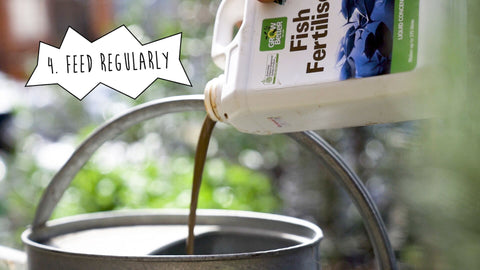How to Grow Coriander

Foodies and gardeners alike often find coriander to be among the most polarising plants in the patch, eliciting equally passionate responses of both love and hatred. While there is nothing that we can offer to change your taste, gardening haters may need to accept some responsibility. Rather than pointing the finger, it may be time to address our own shortcomings.
Coriander can sometimes feel like a tumultuous relationship that you keep going back to. But have you ever considered that maybe coriander is not the difficult partner we make it out to be, rather it always seems to be dating absolute duds? That’s right, we need to stop trying to change coriander, and rather try to understand it better.

The first part in getting to know coriander is understanding when to plant it. Despite some marketing attempts to promote ‘slow bolting’ varieties, the fact is that when you plant it in summer and the warmer parts of spring, all varieties will want to bolt to seed. Planting just before, or even in, the cool of early winter is a time suited to this herb. Make sure that if you're planting when conditions are cold, some overnight protection from frost. Even a plastic bottle sitting over the top of a young seedling will be of great help.

When planting in pots always use good quality potting mix (which is generally indicated by price) and ensure there are adequate drainage holes. Use a pot no less than 30cm wide and deep to grow this herb. Smaller pots will start ok but dry out too quickly, adding extra stress that causes it to....yep, bolt to seed. More soil means higher water holding capacity and more fertility from which the plant can feed.

If planting during spring and summer our advice would be to keep it out of hot afternoon sun. If you have the choice, select the cooler morning sun. Winter is a different proposition. It will appreciate as much sunlight as you can offer then, but don’t be concerned by lack of direct sun; filtered light and even well lit areas will assist in perpetuating its growth.

As we are ideally trying to grow coriander for its leaf foliage - although don't forget that so many parts of the plant are edible - nitrogen is most in demand. Compost with some cow manure integrated into a free draining soil (or simply good quality potting mix if planting in pots) will meet its initial needs, but for sustained foliage growth we recommend monthly feeds with fish fertilizer to keep production rolling.

Water is important in maintaining a stable relationship, so keep the soil moist. We have found that coriander is perfectly suited to wicking beds that draw from a reservoir of water below to moisten the soil and keep it that way. Lack of water will stress it out, and yep.....regardless of whether this is a slow bolting variety, it will bolt to seed.
General growing from seed
A hard coated seed, germination will be aided by soaking them in water the night before planting, and then we recommend a bunched sowing (of approximately 10-15 seed together) to a depth of approximately 1cm. Once the seed has germinated, approximately 7-10 days after sowing, water semi daily or as the weather demands. A subtle poke around the soil will reveal how moisture levels are holding. If it’s moist less than a knuckle deep it will be fine. Anymore, please water.
Temperatures will dictate how quickly the plant will grow, but approximately a month in and you should have a thin green blanket of coriander. Two months in and it should be time to harvest the tops of the herb using scissors, remembering the leave enough foliage on the plant to help keep production rolling. Coriander isn’t a plant that will burst into a glut stage and inundate you with produce - like parsley so often does - so if your demand is high you will need to consider growing multiple plants.
The herb will continue to produce for another couple of months, before it begins its decline. As an annual plant it will only last a season, but this is yet another opportunity to appreciate the plant rather than become frustrated with it. The final part in understanding coriander better: multiple phases of harvest.
As the plant bolts to seed, flower heads will inevitably develop. To the discerning cook this presents an exciting opportunity as coriander flowers are more pungently flavoured than the foliage. As you pick the flowers, it will encourage more along, but a month down the track - and with your plant a leggy mess - it is time to give take phase 3 of production: the seed.
By this stage your plant may have given into aphids - its preferred pest - but this won’t affect the development of seeds. Allow the pods to dry on the plant before picking them for your spice rack. At this point, there’s no reason to leave the plant in ground, and so removing it will reveal the final phase of production: the roots.
Loved or hated, sure, but undisputedly, coriander has so much to offer.

